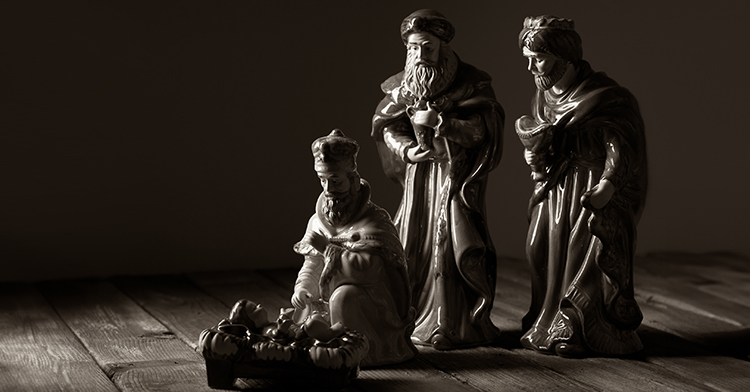The following Scripture reading for three voices juxtaposes the first and second coming of Christ with the constancy of the words of John 1. Consider having this piece read from the back and mid-sides of the congregation rather than the front to allow the texts’ imagery its full potential. Choose a mix of voices across age and gender to further intensify the tension between the texts. For best dramatic effect, have this read with no pause before each new reader, connecting the verses and forming a sense of progress and movement.
Reader 1: At that time the Roman emperor, Augustus, decreed that a census should be taken throughout the Roman Empire. This was the first census taken when Quirinius was governor of Syria. All returned to their own towns to register for this census.
Reader 2: In the beginning was the Word, and the Word was with God, and the Word was God. He was in the beginning with God. All things came into being through him, and without him not one thing came into being. What has come into being in him was life, and the life was the light of all people.
Reader 1: She gave birth to her first child, a son. She wrapped him snugly in strips of cloth and laid him in a manger, because there was no room for them in the village inn.
Reader 2: The light shines in the darkness, and the darkness did not overcome it. There was a man sent from God, whose name was John. He came as a witness to testify to the light, so that all might believe through him. He himself was not the light, but he came to testify to the light. The true light, which enlightens everyone, was coming into the world.
Reader 3: For as the lightning lights up the entire sky, so it will be when the Son of Man comes.
Reader 1: That night some shepherds were in the fields outside the village, guarding their flocks of sheep. Suddenly, an angel of the Lord appeared among them, and the radiance of the Lord’s glory surrounded them. They were terribly frightened, but the angel reassured them. “Don’t be afraid!” he said. “I bring you good news of great joy for everyone!”
Reader 2: He was in the world, and the world came into being through him; yet the world did not know him. He came to what was his own, and his own people did not accept him. But to all who received him, who believed in his name, he gave power to become children of God, who were born, not of blood or of the will of the flesh or of the will of man, but of God.
Reader 3: His eyes are like blazing fire, and on his head are many crowns. He has a name written on him that no one knows but he himself. ... His name is the Word of God. The armies of heaven were following him, riding on white horses and dressed in fine linen, white and clean.
Reader 1: The Savior -- yes, the Messiah, the Lord -- has been born tonight in Bethlehem, the city of David! And this is how you will recognize him: You will find a baby lying in a manger, wrapped snugly in strips of cloth! Suddenly, the angel was joined by a vast host of others -- the armies of heaven -- praising God:
All: Glory to God in the highest heaven, and peace on earth to all whom God favors.
Reader 1: When the angels had returned to heaven, the shepherds said to each other, “Come on, let’s go to Bethlehem! Let’s see this wonderful thing that has happened, which the Lord has told us about.” They ran to the village and found Mary and Joseph.
Reader 2: And the Word became flesh and lived among us, and we have seen his glory, the glory as of a father’s only son, full of grace and truth.
Reader 3: On his robe and on his thigh he has this name written: KING OF KINGS AND LORD OF LORDS.
Reader 1: And there was the baby, lying in the manger. Then the shepherds told everyone what had happened and what the angel had said to them about this child. All who heard the shepherds’ story were astonished, but Mary quietly treasured these things in her heart and thought about them often.
The Matthew 24 and Luke 2 verses are taken from the New Living Translation of the Bible; John 1, the New Revised Standard Verson; and Revelation 19, the New International Version.











